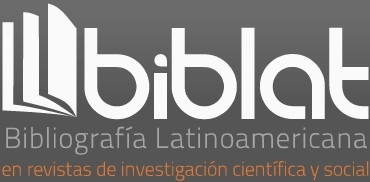Environmental management in the resignification processes of existence
DOI:
https://doi.org/10.35494/topsem.2018.1.39.526Keywords:
life forms, immanence, environmental management, existence, durable,Abstract
Semiotic systems can be analyzed from the development of the
environment which, according to the environmentalists cited in
this article, consists of the relationship between what belongs to
the social domain and the ecological domain through culture.
According to the author, this definition refers to the semiosphere
as conceived by Lotman: “The semiosphere is both the result and
the condition of the development of culture”. It could be considered
that immanence is the semiotic instance that allows the
establishment of relationships between the different systems of
the semiosphere. In this process, which would be called semiotics
of environmental management, discourse plays a leading role as
is postulated by the work Semiotics, education and environmental
management by Bodil Andrade Frich and Benjamín Ortiz
Espejel, on whom this article is based.
Downloads
References
ANDRADE FRICH, Bodil y ORTIZ ESPEJEL, Benjamín (2004). Semiótica, educación y gestión ambiental comunitaria. México: UIA-Puebla/BUAP.
BOURDIEU, Pierre (1980). Le sens pratique. París : Minuit.
Certeau, Michel de (1980). L’invention du quotidien. Arts de faire.
París : Union Générale d’Éditions, coll. 10/18.
FONTANILLE, Jacques (1989). Les espaces subjectifs. Introduction à la sémiotique de l’observateur. París : Hachette.
___________ (2015a). “La inmanencia: ¿estrategia del humanismo?”, Tópicos del Seminario. Revista de Semiótica, núm. 33, vol. II, 2015, pp. 291-333.
___________ (2015b). Formes de vie. Lieja : Presses Universitaire de Liège.
LOTMAN, Youri (1999). La sémiosphère, coll. Nouveaux Actes Sémiotiques. Limoges : Pulim.
MEDINA RAMOS, Genaro (2005). Calmecac. Tradición y pensamiento del pueblo de San Lucas Atzala. México: Ediciones L’Anxaneta/BUAP.
PHELAN, John (1972). El reino milenario de los franciscanos. México: UNAM.
RICARD, Robert (1986). La conquista espiritual de México. México:
FCE.
RUIZ MORENO, Luisa (2017). “L’inmanence et la gestión de
l’environnement”. In Zinna, Alessandro et Darrault-Harris (éds.).
Formes de vie et modes d’existence ‘durables’. Collection Actes.
Toulouse, Éditions cams/o, pp. 195-215. Disponible en: http://
mediationsemiotiques.com/ca_9482
SAUSSURE, Ferdinand de (2001). Curso de lingüística general. Buenos Aires: Losada.
___________ (2004). Escritos sobre lingüística general. Madrid:
Gedisa.
TOLEDO, Víctor Manuel y ORTIZ ESPEJEL, Benjamín (2014). México, regiones que caminan hacia la sustentabilidad. Hacia la geopolítica de las resistencias bioculturales. México: UIA-Puebla.
ZINNA, Alessandro y RUIZ MORENO, Luisa (eds.). (2014). “Las
razones de la inmanencia”, Tópicos del Seminario. Revista de
semiótica, núm. 31, vol. I (Dedicado a “La inmanencia en cuestión”). Puebla, México: BUAP, pp. 6-17.
___________ (2014). “La inmanencia absoluta y sus divergencias”, Tópicos del Seminario. Revista de semiótica, núm. 32, vol. II (Dedicado a “La inmanencia en cuestión”). Puebla, México: BUAP, pp. 5-14.
___________ (2015). “Las estrategias de la inmanencia”, Tópicos del Seminario. Revista de semiótica, núm. 33, vol. III (Dedicado a “La inmanencia en cuestión”). Puebla, México: BUAP, pp. 5-13.
Downloads
Published
How to Cite
Issue
Section
License

Tópicos del Seminario is licensed under a Creative Commons Reconocimiento-NoComercial-CompartirIgual 4.0 Internacional License.














